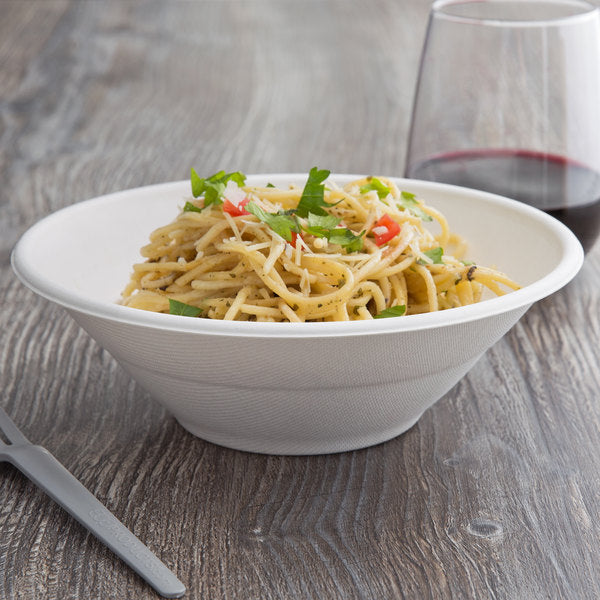When it comes to enjoying poultry, the choice between dark meat vs white meat often sparks a lively debate among food enthusiasts. Both types offer distinct flavors, textures, and nutritional profiles. In this article, we will delve into the world of dark meat vs white meat, exploring their definitions, cuts, differences, and the ongoing discussion surrounding their health benefits.
White Meat Overview
What Is White Meat?
White meat refers to the lighter-colored, leaner portions of poultry. A milder flavor and a tender, delicate texture characterize it. White meat is typically found in the breast, tenderloin, wing, and parts of the back cuts of poultry meat.
White meat has a mild flavor profile, and easily absorbs marinades, spices, and sauces, making it a blank canvas for a wide range of flavors.

What Part of the Chicken Is White Meat?
The primary sources of white meat in a chicken are the breast and wing muscles. These areas contain less connective tissue and fat compared to dark meat cuts, resulting in cleaner and more subtly flavored meat.
- Breast: Chicken breast meat is lean, mild, and high in protein. However, this leanness is it dries out easily when cooked.
- Tenderloin: Tenderloin meat is one of the softest and moistest cuts of white meat.
- Back: The back cut includes white and dark meat, with the white meat being near the breast. It is primarily used for soup, stock, or broth because there isn’t much meat left on it after butchering the rest of the bird.
- Wings: Chicken wings are one of the juiciest and most flavorful cuts of white meat. So they are ideal for smoking, roasting, grilling, and frying.
Dark Meat Overview
What Is Dark Meat?
Dark meat refers to the richer, more succulent portions of poultry. It possesses a slightly stronger flavor and a moist, tender texture. Dark meat is commonly found in the leg and thigh regions of the chicken.

What Pieces of Chicken Are Dark Meat?
- Leg: Chicken leg meat is rich in protein, omega-3 fatty acids, vitamins, and minerals. This is the perfect cut for a single-person meal. The chicken leg contains both fat and bones, making it extremely flavorful.
- Thigh: This is the part rich in fat, moisture, and flavor, thighs are typically prepared with a marinade to accentuate their natural juiciness. Compared to chicken breasts, thighs are an economical choice.
- Drumstick: Drumsticks are succulent cuts that pair wonderfully with strong seasonings and can be fried, barbecued, or grilled and paired with beer.
- Back: The back cut includes both white meat and dark meat, with the dark meat being near the legs.
- Tail: Fatty chicken tail meat is sometimes served alongside a cut of back, leg, or thigh meat.
Differences Between Dark Meat vs White Meat
The primary differences between white meat vs dark meat are as follows:
Flavor
White meat has a milder taste, while dark meat offers a more pronounced, richer flavor.
Texture
White meat is known for its tender and delicate texture, while dark meat is often considered more moist, juicy, and slightly chewier.
Fat Content
Dark meat generally contains a higher fat content due to its higher fat deposits and increased connective tissues, while white meat is leaner.
Myoglobin
Dark meat has a greater concentration of myoglobin, a protein that stores oxygen, resulting in a darker color.
White vs. Dark Meat Nutrition
While both types provide essential nutrients, dark meat tends to be higher in calories, total fat, and certain vitamins and minerals, such as iron and zinc. White meat is lower in calories and fat, particularly saturated fat.
|
Serving: 1 cup, chopped, no skin |
White Meat Chicken |
Dark Meat Chicken |
|
Calories |
231 |
249 |
|
Carbohydrates (g) |
0 |
0 |
|
Dietary Fiber (g) |
0 |
0 |
|
Total Sugar (g) |
0 |
0 |
|
Added Sugar (g) |
0 |
0 |
|
Protein (g) |
43 |
33 |
|
Total Fat (g) |
5 |
12 |
|
Saturated Fat (g) |
1.4 |
3.4 |
|
Cholesterol (mg) |
119 |
105 |
|
Sodium (mg) |
104 |
133 |
|
Iron (mg)(%DV) |
1.5 (8%) |
1.9 (11%) |
|
Phosphorous (mg)(%DV) |
319 (26%) |
239 (19%) |
|
Zinc (mg)(%DV) |
1.4 (13%) |
3 (27%) |
|
Vitamin B12 (mcg)(%DV) |
0.48 (20%) |
0.38 (16%) |
|
Thiamin (mg)(%DV) |
0.1 (8%) |
0.09 (8%) |
|
Niacin (mg)(%DV) |
19 (118%) |
8 (50%) |
|
Pantothenic acid (mg)(%DV) |
1.4 (28%) |
1.4 (28%) |
|
Riboflavin (mg)(%DV) |
0.2 (15%) |
0.27 (21%) |
|
Vitamin B6 (mg)(%DV) |
0.8 (47%) |
0.4 (24%) |

Pros & Cons Of Dark Meat And White Meat
|
Criteria |
White Meat |
Dark Meat |
|
Nutritional composition |
- Vitamin A, B group, iron, zinc,… - Rich in easily absorbed protein - Unsaturated fats |
- Vitamin A, B group, Niacin, minerals such as iron, zinc, Calcium,... - Contains Omega 3, 6 - Rich in Protein and energy |
|
Health Benefits |
- Contains little cholesterol, low fat ratio, good for people with cardiovascular disease, want to lose weight, want to have a healthy diet. - Eliminates bad cholesterol. - Rich in nutrients that are beneficial for health. - Easy to digest, easy to absorb. |
- Rich in nutrients for people who need nutritional supplements. - Blood tonic, nourishes red blood cells thanks to high iron content. - Vitamin B12 helps produce DNA. - Good for the nervous system thanks to Omega. |
|
Health Disadvantages |
- Duck and goose meat is cold and harder to digest than chicken. - Not as nutritious as red meat. |
- Contains more cholesterol than white meat, contains saturated fat that is harmful to the heart. - Eating too much red meat, especially unprocessed red meat, can increase the risk of cancer, especially breast, prostate and intestinal cancer. |
Dark Meat vs White Meat: Which Should You Choose?
The choice between white meat and dark meat largely depends on personal preference and dietary considerations. Here are some factors to consider:
- Taste Preference: If you enjoy a milder, more subtle flavor, white meat may be your preference. If you prefer a richer, more pronounced taste, dark meat is likely to satisfy your palate.
- Texture Preference: White meat is known for its tender, delicate texture, while dark meat provides a moist and slightly firmer bite.
- Nutritional Needs: If you're looking for a leaner option with lower calorie and fat content, white meat is a suitable choice. However, dark meat offers additional nutrients like iron and zinc and can be beneficial for those with higher energy requirements.
How to Cook Dark Meat and White Meat
Cooking Dark Meat
Roasting and frying: Dark meat (chicken thighs, duck, or fatty cuts of meat) has good moisture retention due to its high fat content. To achieve a crispy exterior while still retaining moisture on the inside, you should:
- Choose a high temperature: Start grilling at a high temperature of about 200-220°C to create a crispy crust, then reduce the temperature to let the meat cook slowly.
- Use oil or butter: Before grilling, brush a layer of olive oil or butter on the surface to retain moisture and create a shine.
- Roasting time: Grill for about 20-30 minutes depending on the size of the meat and then check the doneness with a food thermometer.
- Low-temperature slow cooking: Use temperatures around 300-350°F (150-160°C) in a slow cooker or pressure cooker to keep the meat tender and flavorful.
- Add liquid: Use stock, wine, or coconut water to add flavor and keep the meat moist as it cooks.
Preparing White Meat
Grilling and pan-frying: White meat (chicken breast, turkey, or lean cuts of meat) tends to dry out when cooked, so be careful:- Marinate with salt or lemon juice: Before grilling, season the meat with salt or lemon juice to help retain moisture.
- Moderate grilling temperature: Grill at a medium temperature (300-400°F) and avoid over-grilling to keep the meat tender.
- Quickly sear: Quickly sear in oil or butter for 2-3 minutes on each side, then let cool over low heat to cook the meat evenly without drying it out.
- Quick boil: Boil water, add meat, then reduce temperature and cook for about 10-15 minutes until meat is tender.
- Use sauce: Combine with light sauce such as mayonnaise, yogurt sauce to increase fat and flavor.

Dark Meat and White Meat in Different Cuisines
Asian Cuisine
- Dark meat is popular in Asian dishes such as curries, chicken soups, and stews. Chicken thighs are often used in stews or hot pots because they retain their tenderness and sweetness.
- White meat is also used, but mainly in fast or light dishes such as chicken salad, chicken salad, and light grilled dishes.
Western Cuisine
- White meat is popular in Western dishes such as sandwiches, Caesar salad, and grilled dishes. Chicken breast is low in fat and easy to combine with vegetables and light sauces.
- Dark meat is often used in rich dishes such as roast meat, BBQ, and nutritious winter dishes.
Notes When Choosing Dark Meat and White Meat
Choose the right meat for your nutritional needs:
- Dark meat: Contains more fat and iron, suitable for those who need high energy or like rich flavors.
- White meat: Has less fat, fewer calories and is suitable for those who are on a diet or need to control cholesterol.
Health notes: Consuming too much dark meat can increase cholesterol and saturated fat in the body, while overcooking white meat can lose some essential nutrients.
Tips for Preparing and Using
Combine dark meat and white meat in a meal: Use dark meat for a rich main dish such as roasting or stewing, and use white meat for an appetizer or light salad to create a nutritional balance.
Tips from professional chefs:
- Mixed grilling: When grilling both types of meat, start grilling the dark meat first and add the white meat later to ensure both are cooked evenly without drying out.
- Use seasonings wisely: Dark meat needs stronger seasonings like garlic, onion, and pepper, while white meat only needs salt, pepper, and a few herbs to keep it fresh.
White vs. Dark Meat FAQ
Is Dark Meat Better Than White Meat?
There is no definitive answer as to which is better, as it depends on personal taste and dietary needs. Dark meat offers a richer flavor and higher fat content, while white meat is leaner and milder in taste.
Red vs. White Meat?
Red meat refers to the meat of mammals, such as beef, lamb, and pork, which contains higher amounts of myoglobin and is darker in color. White meat refers to poultry, such as chicken and turkey, which is lighter in color and contains less myoglobin.
Is White Meat Healthier Than Dark Meat?
White meat is generally considered healthier due to its lower calorie and fat content. However, dark meat offers additional nutrients like iron and zinc, which can be beneficial for certain individuals.
Conclusion
The debate between dark meat vs white meat continues to intrigue food enthusiasts. While white meat is renowned for its mildness and tenderness, dark meat offers a richer flavor and succulence. The choice between the two depends on personal preference, culinary applications, and nutritional considerations. Whether you opt for the leaner white meat or savor the moistness of dark meat, both types of poultry provide unique culinary experiences that can be enjoyed in a variety of dishes. Embrace the flavors and textures that suit your palate and dietary needs, and relish the diverse world of chicken meat.
Related Articles:







